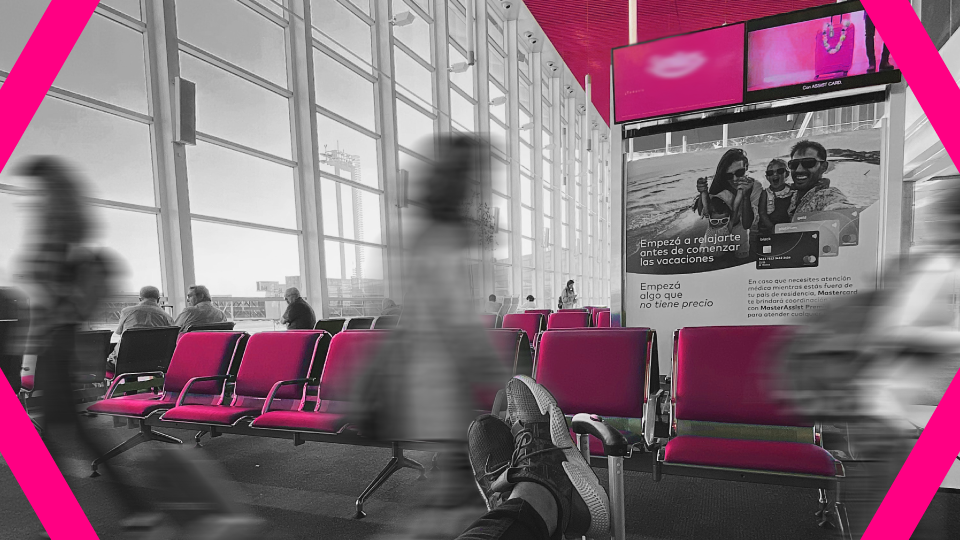August 4, 2022 | Expert Insights
Top 3 ways to target summer travelers with programmatic DOOH

Bags are packed and audiences are jetting off, but with programmatic digital out of home (DOOH), advertisers don’t have to stay behind. Learn how to precisely target at scale while consumers travel across the globe.
There is no denying that this summer, audiences are eager to get away. As travel restrictions continue to loosen, travel is forecasted to be the fastest growing product category (27%) in 2022. When it comes to a marketing strategy during these months, traditionally, advertisers would utilize local out of home (OOH) environments to reach potential travelers and tourists before they depart. Perhaps they would opt to activate suncare ads, or summer wardrobe staples, but now with DOOH innovation and programmatic technology, buyers can unlock unique opportunities to reach and engage with audiences in a more contextually relevant way throughout their journey and even at their destination.
By truly understanding audience movement patterns, buyers can optimize their strategies to target with relevant messaging in real-time, or at key moments such as flight or train delays, all through a single platform.
According to Out of Home Advertising Association of America (OAAA):
85% of consumers plan to travel this summer
79% of consumers plan to drive to their vacation destination
63% of consumers plan to stay at a hotel
Here are the key environments advertisers can leverage in order to connect with audiences while they travel.
Airports
Airports are unique environments - a premium location with distinctive environmental and contextual advantage.
With lounges, buyers can reach the (normally hard to reach) affluent, or B2B audiences. In particular, this provides certain budget efficiency for high priced luxury goods, or tech brands. Lounges really offer an OOH media akin only to high end industry or luxury magazines, but with the opportunity of ads on the big screen and a video creative.
Departures offer a higher dwell time with audiences en-route, so brands can take advantage of in-airport acquisition, or holiday overspend mentality, not to mention the “frequent traveler” opportunity. Arrivals and baggage claim offer a unique environment for incoming travelers and domestic brands, as well as more changeable or dynamic creative options.
Delivering impactful campaigns with an audience-centric approach has never been easier. Advertisers can seamlessly activate campaigns across multiple screens or territories and utilize easy to use, data driven features within a single DSP platform to achieve maximum efficiency across multiple airports.
There is also the opportunity to activate custom creative or deliver on key moments in real-time based on unique pre-set environmental or event triggers, including live flight information allowing for more strategic marketing and dynamic creative opportunity. For example, targeting a flight corridor for a conference where buyers can activate for two hours before a specific flight leaves on specific screens, and then following through with creatives at the baggage carousel, in the right language and messaging.
Roadside/domestic travel routes
For those not looking to fly, road trips remain a popular method of travel during the summer months. Digital boards located on popular highways (think Route 20 in the US, which stretches across 12 states), are a unique opportunity for advertisers to leverage contextual messaging to speak to travelers on the go.
Digital screens located in other travel environments, such as train stations, subways, and ferries provide other opportunities to capture the attention of target audiences with contextually relevant messaging. Take, for example, a popular hotel chain - it can use mobile device IDs to target travelers in real-time while they drive across the country to drive demand for their business.
Because programmatic is heavily data-driven, this gives any brand, no matter their size, an opportunity to be flexible and competitive. Big budgets are no longer required to make an impact, you just need to have a clear target audience and select strategic locations in order to produce real world outcomes.
Points of interest
Being able to target custom audiences, buyers can activate any screens or media types based on audiences who have been tracked in or near specific points of interest (POI). For example you could geofence an airport and target audiences deemed as travel intenders elsewhere in the city via bus stop screens, or geofence specific competitor brand stores and then target the audiences that have visited those in shopping malls, as part of a conquest campaign for your brand. This also allows the platform to do all the work for you, and drive more efficiency for your budgets. Programmatic DOOH allows you to identify opportunities and seamlessly automate the planning and buying process without wasting any time.
Programmatic technology also enables campaigns to be borderless and offers a self-service approach to activating creative anywhere in the world. These “outside-in” opportunities allow advertisers to bring scale to their campaigns without the hassle. A UK based brand could easily connect with British travelers in other markets by leveraging a DSP platform and activating custom creative while a high propensity of them would be near a DOOH environment. The opportunities to be precise are truly endless.
Conclusion
There has never been a more important time for brands and agencies to select the right adtech partner in order to stand out from the crowd. The best part is that programmatic DOOH can gather highly analytical data and insights and can measure the impact of campaigns in real-time, optimize and/or scale on the fly and receive custom reporting and measurement dashboards. There are no excuses for brands to stay behind this summer, it’s time to pack your bags.


